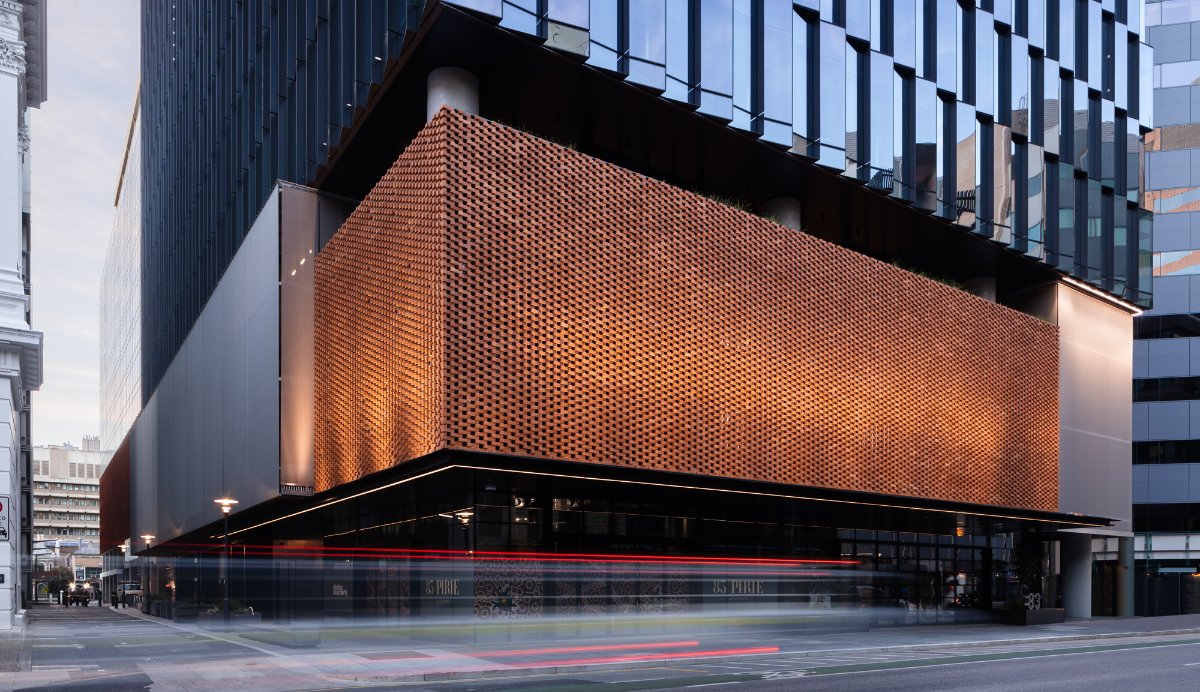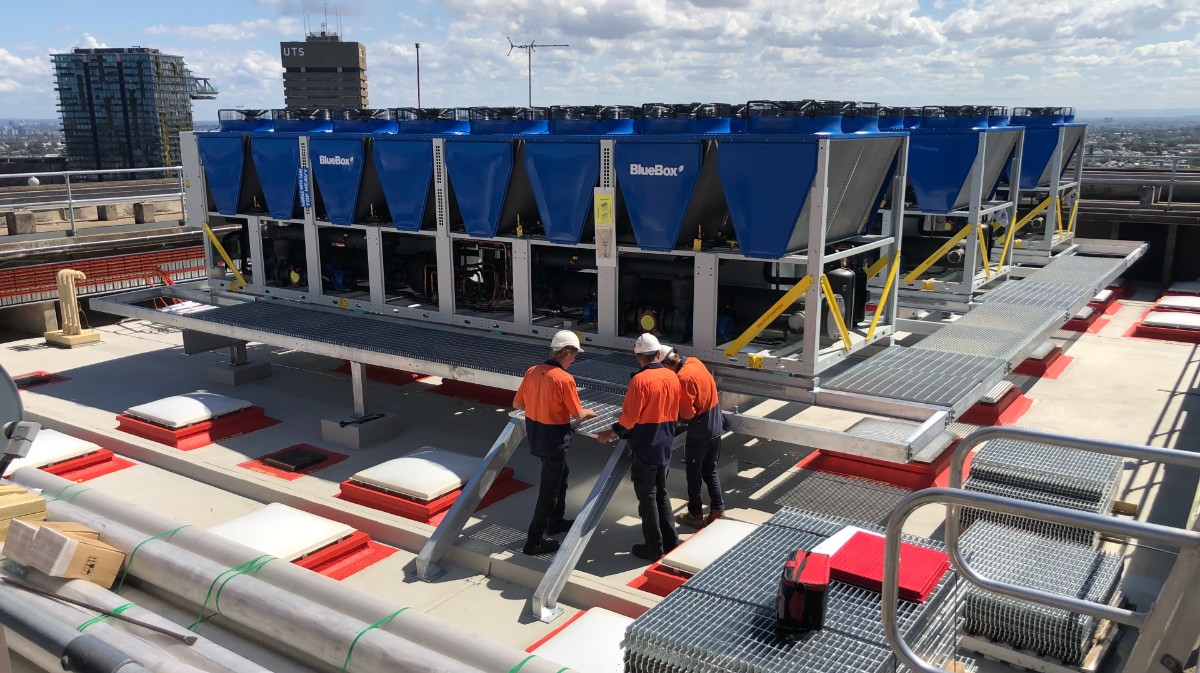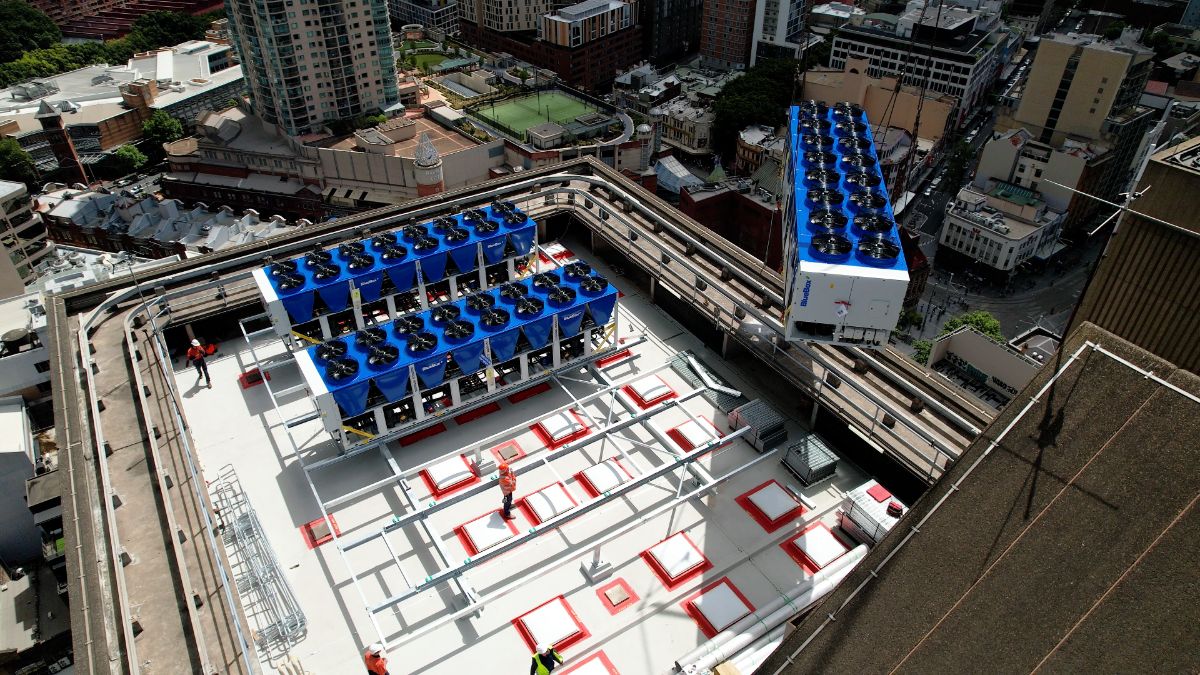
83 Pirie Street Adelaide, Cbus Property, courtesy of Trevor Mein 2022
Electrification is the property industry’s most powerful lever for rapid emissions reduction.
Australia has more than one million commercial buildings, and around 10% of our national carbon emissions is generated in their operation. To disconnect all stock from gas by 2050, an estimated 3.5% of commercial buildings need to electrify each year – a steep uplift from the current rate of 1%.
The good news is that the grid is decarbonising fast. Renewables supplied 41.5% of the national energy market at the close of the 2025 financial year.
Buildings can only take full advantage of this shift if they are all-electric. Efficient heat pumps, hot water systems and induction cooktops, combined with thermal upgrades and smart controls, are readily available technologies that can eliminate emissions, reduce energy bills, meet tightening compliance and the expectation of tenants increasingly on the hunt for net zero space.
The market is moving
NABERS is tracking a growing number of buildings being electrified, especially in the office, shopping centre and hotels sectors.
Federal and state governments have set ambitious emissions reduction targets, backed by practical policies like the federal government’s Net Zero in Government Operations roadmap which prioritises all-electric buildings and sends strong signals to the market.
JLL research has found electrified buildings with 5.5-star NABERS Energy ratings command a 10% rent premium.
New developments are being tackled through the Green Star rating system, with electrification a prerequisite for certification from 2026. Retrofitting existing assets is more complex, but owners increasingly recognise that the upfront cost of electrification is outweighed by the longer-term risks of stranded assets, tenant flight and rising compliance obligations.
NABERS’ evolving role
Locally, NABERS is trusted, widely used and embedded in policy, providing a benchmark that underpins much of Australia’s world-class property performance. Internationally, it stands among a small group of leading performance-based systems, aligning Australia’s property leaders with the highest global standards of transparency and continuous improvement.
As the electricity grid decarbonises, emissions factors are no longer a reliable measure of building performance. NABERS is adapting: phasing out the use of GreenPower in ratings, tightening benchmarks, and introducing new tools like the Renewable Energy Indicator (REI) and prediction calculators.
The benchmark update in July 2025 aligned ratings with the latest National Greenhouse Accounts. Looking further ahead, NABERS is consulting with industry on proposed 2030 changes, including a shift to energy-based metrics that treat electricity and gas equally.
“We are giving the market long lead times and practical modelling tools so owners can prepare their assets and plan investment decisions with confidence,” says Matilde Martin, Energy Updates Lead at NABERS.
Cbus Property’s power play
Cbus Property was among the first movers on electrification, demonstrating industry leadership by delivering South Australia’s first all-electric office building when 83 Pirie Street, Adelaide, reached practical completion in 2022.
At Melbourne’s 435 Bourke Street, one of the world’s first solar skin façades will generate up to 20% of the tower’s electricity needs on site – around six times more than a typical rooftop array. Combined with off-site renewables, the fully electric building will operate at net zero carbon from day one.
Cbus Property is also progressively phasing out fossil fuels in its existing assets. At 720 Bourke Street, a 20-level Docklands tower delivered in 2014, a retrofit electrification is underway ahead of the tenant relocating its national headquarters in 2027.
“We are taking a holistic approach to electrification. Rather than simply ‘boiler out, heat pump in,’ we have developed a building-by-building strategy that considers the full lifecycle of plant and equipment,” says Peter Bartucca, Cbus Property’s National Manager, Investment Operations. “It’s a considered approach that gives every asset a strategic plan for decarbonisation.
“The NABERS Energy rating system provides a metric for Cbus Property to measure our holistic decarbonisation approach over time, which includes a combination of energy efficiency, on-site renewables and electrification, delivering cost-effective commercial and sustainability benefits.”
Cromwell is wired for the future
Cromwell Property Group’s McKell Building was the first Sydney CBD office tower to undergo full electrification. Overcoming complex engineering and logistical challenges, Cromwell has created a playbook for other owners making the switch to electricity.
“The gas boilers were at their end of life, so we had a decision to make: replace like-for-like, or take the opportunity to electrify. We knew the smarter, future-focused choice was electrification,” says David Deller, Cromwell’s National Manager of Property Sustainability.
Cromwell explored several technology pathways before selecting a heat recovery chiller, which reuses ‘free energy’ from simultaneous heating and cooling. Modelling confirmed the McKell Building would hold its 5.5-star NABERS Energy rating, giving confidence the building’s performance would be resilient. Learn more in our case study online.
“We faced the same challenges other owners will: ageing infrastructure, limited space and live tenants. What we’ve shown is that with the right planning, data and expertise, you can overcome those hurdles and create a building that is efficient, resilient and future-ready,” David says.

McKell Building HVAC installation 2-24 Rawson Place, Sydney NSW, 2000

